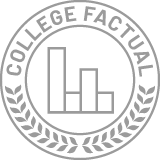2022 Best Value Master’s Degree Colleges for Natural Resources Conservation (Income $0-$30k) in Oregon

Students have lots of options to chooose from today when trying to decide which college to attend. At College Factual, we’re committed to helping you make that decision by providing information such as that found in our “Best Value Conservation Schools for a Master’s in Oregon For Those Making $0-$30k” ranking.
Natural Resources Conservation is the 50th most popular major in the country with 22,202 degrees awarded in 2019-2020. In 2017-2018, natural resources conservation graduates who were awarded their degree in 2015-2017, earned an average of $33,654 and had an average of $25,969 in loans still to pay off.
Across Oregon, there were 485 natural resources conservation graduates with average earnings and debt of $24,267 and $24,310 respectively. At the master’s degree level specifically, there were 40 natural resources conservation graduates with average earnings and debt of $0 and $0 respectively.
This year’s “Best Value Conservation Schools for a Master’s in Oregon For Those Making $0-$30k” ranking looked at 4 colleges that offer degrees in a bachelor’s in natural resources conservation. This ranking identifies schools with high-quality natural resources conservation programs that also have a lower cost than schools of similar quality.
When determining these rankings, we looked at things such as overall quality of the natural resources conservation program at the school and the cost to attend the school once aid has been awarded. Check out our ranking methodology for more information.
Featured schools near , edit
More Ways to Rank Natural Resources Conservation Schools
Since picking the right college can be one of the most important decisions of your life, we’ve developed the “Best Value Conservation Schools for a Master’s in Oregon For Those Making $0-$30k” ranking, along with many other major-related rankings, to help you make that decision.
In addition to our rankings, you can take two colleges and compare them based on the criteria that matters most to you in our unique tool, College Combat. We encourage you to try it out and pit your favorite colleges and universities head to head! If you don’t have time right now, you can bookmark it for later.
Best Value Conservation Schools for a Master’s in Oregon For Those Making $0-$30k
The following schools top our list of the Best Best Value Conservation Schools for a Master’s in Oregon For Those Making $0-$30k.
Top 4 Best Value Master’s Degree Colleges for Natural Resources Conservation (Income $0-$30k) in Oregon
Out of the 4 schools in the Best Value Conservation Schools for a Master’s in Oregon For Those Making $0-$30k that were part of this year’s ranking, Southern Oregon University landed the #1 spot on the list. This medium-sized school is located in Ashland, Oregon, and it awarded 13 masters’s conservation degrees in 2019-2020.
As a testament to the quality of education offered at Southern Oregon University, the school also landed the #3 spot in our “Best Natural Resources Conservation Master’s Degree Schools in Oregon” ranking. Average graduate tuition and fees at Southern Oregon University are $23,445, but you may pay more or less depending on your major.
Read full report on Natural Resources Conservation at Southern Oregon University
You’ll join some of the best and brightest minds around if you attend Oregon State University. The school came in at #2 for the Best Value Conservation Schools for a Master’s in Oregon For Those Making $0-$30k. This large school is located in Corvallis, Oregon, and it awarded 17 masters’s conservation degrees in 2019-2020.
Oregon State also took the #1 spot in our “Best Natural Resources Conservation Master’s Degree Schools in Oregon” ranking. Average graduate tuition and fees at Oregon State are $28,121, but some majors have different tuition rates.
Read full report on Natural Resources Conservation at Oregon State University
Out of the 4 schools in the Best Value Conservation Schools for a Master’s in Oregon For Those Making $0-$30k that were part of this year’s ranking, University of Oregon landed the #3 spot on the list. University of Oregon is a large school located in Eugene, Oregon that handed out 3 masters’s conservation degrees in 2019-2020.
UO not only placed well in this ranking. It is also #0 on our “Best Natural Resources Conservation Master’s Degree Schools in Oregon” list. Although you might pay more or less depending on your area of study, average graduate tuition and fees at University of Oregon are $29,991.
Read more about Natural Resources Conservation at University of Oregon
You’ll be in good company if you decide to attend Portland State University. It ranked #4 on our 2022 Best Value Conservation Schools for a Master’s in Oregon For Those Making $0-$30k list. Portland State University is a public institution located in Portland, Oregon. The school has a large population, and it awarded 6 masters’s degrees in 2019-2020.
Portland State University did well in our major quality rankings, too. It placed #2 on our “Best Natural Resources Conservation Master’s Degree Schools in Oregon” list. Average graduate tuition and fees at Portland State University are $23,784, but some majors have different tuition rates.
Read more about Natural Resources Conservation at Portland State University
Focus on a Specific Degree Level
All Degree Levels
Best Value Colleges for Natural Resources Conservation (Income $0-$30k) in Oregon
Bachelors
Best Value Bachelor's Degree Colleges for Natural Resources Conservation (Income $0-$30k) in Oregon
Doctorate
Best Value Doctor's Degree Colleges for Natural Resources Conservation (Income $0-$30k) in Oregon
Narrow Results by State
Alaska
Best Value Master's Degree Colleges for Natural Resources Conservation (Income $0-$30k) in Alaska
Washington
Best Value Master's Degree Colleges for Natural Resources Conservation (Income $0-$30k) in Washington
California
Best Value Master's Degree Colleges for Natural Resources Conservation (Income $0-$30k) in California
Hawaii
Best Value Master's Degree Colleges for Natural Resources Conservation (Income $0-$30k) in Hawaii
Oregon
Best Value Master's Degree Colleges for Natural Resources Conservation (Income $0-$30k) in Oregon
Nevada
Best Value Master's Degree Colleges for Natural Resources Conservation (Income $0-$30k) in Nevada
- Best Value Master’s Degree Colleges for Natural Resources Conservation (Income $0-$30k) in the Far Western US Region
- Best Value Master’s Degree Colleges for Natural Resources Conservation (Income $0-$30k)
Switch to a Similar Major
Natural Resource Management
Best Value Master's Degree Colleges for Natural Resource Management (Income $0-$30k) in Oregon
Forestry
Best Value Master's Degree Colleges for Forestry (Income $0-$30k) in Oregon
Natural Resources Conservation (Other)
Best Value Master's Degree Colleges for Natural Resources Conservation (Other) (Income $0-$30k) in Oregon
Switch to a Different Ranking Method
Best Natural Resources Conservation Master's Degree Schools in Oregon
Natural Resources Conservation students in the state of Oregon
Most Focused Master's Degree Colleges for Natural Resources Conservation in Oregon
Natural Resources Conservation students in Oregon
Most Popular Master's Degree Online Natural Resources Conservation Schools
Natural Resources Conservation students in Oregon
Best Value Master's Degree Colleges for Natural Resources Conservation (Income $0-$30k) in Oregon
Natural Resources Conservation students with family income less than $30k in Oregon
Best Value Master's Degree Colleges for Natural Resources Conservation (Income $48-$75k) in Oregon
Natural Resources Conservation students with family income $48-$75k in Oregon
Best Value Master's Degree Colleges for Natural Resources Conservation (Income Over $110k) in Oregon
Natural Resources Conservation students with family income exceeding $110k in Oregon
Highest Paid Master's Degree Natural Resources Conservation Graduates in Oregon
Natural Resources Conservation students in Oregon
Most Popular Master's Degree Colleges for Natural Resources Conservation in Oregon
Natural Resources Conservation students in Oregon
Best Value Master's Degree Colleges for Natural Resources Conservation in Oregon (With Aid)
Natural Resources Conservation students getting aid in Oregon
Best Value Master's Degree Colleges for Natural Resources Conservation (Income $30-$48k) in Oregon
Natural Resources Conservation students with family income $30-$48k in Oregon
Best Value Master's Degree Colleges for Natural Resources Conservation (Income $75-$110k) in Oregon
Natural Resources Conservation students with family income $75-$110k in Oregon
Notes and References
References
- The Integrated Postsecondary Education Data System (IPEDS) from the National Center for Education Statistics (NCES), a branch of the U.S. Department of Education (DOE) serves as the core of our data about colleges.
- Some other college data, including much of the graduate earnings data, comes from the U.S. Department of Education’s (College Scorecard).
- Information about the national average student loan default rate is from the U.S. Department of Education and refers to data about the 2016 borrower cohort tracking period for which the cohort default rate (CDR) was 10.1%.
Read more about our data sources and methodologies
Footnotes
- *Average salary, average net price, and average tuition and fees are for the top schools only.
- Some schools otherwise deserving of recognition may have been removed from this ranking in the event that new data identified post-publication warranted it, or at the request of the school.
Credits
- Credit for the banner image above goes to Lynn Betts.
Featured Environment / Natural Resources Schools
 Request Info
Request Info
|
Southern New Hampshire University
You have goals. Southern New Hampshire University can help you get there. Whether you need a bachelor's degree to get into a career or want a master's degree to move up in your current career, SNHU has an online program for you. Find your degree from over 200 online programs ... Learn More > |




